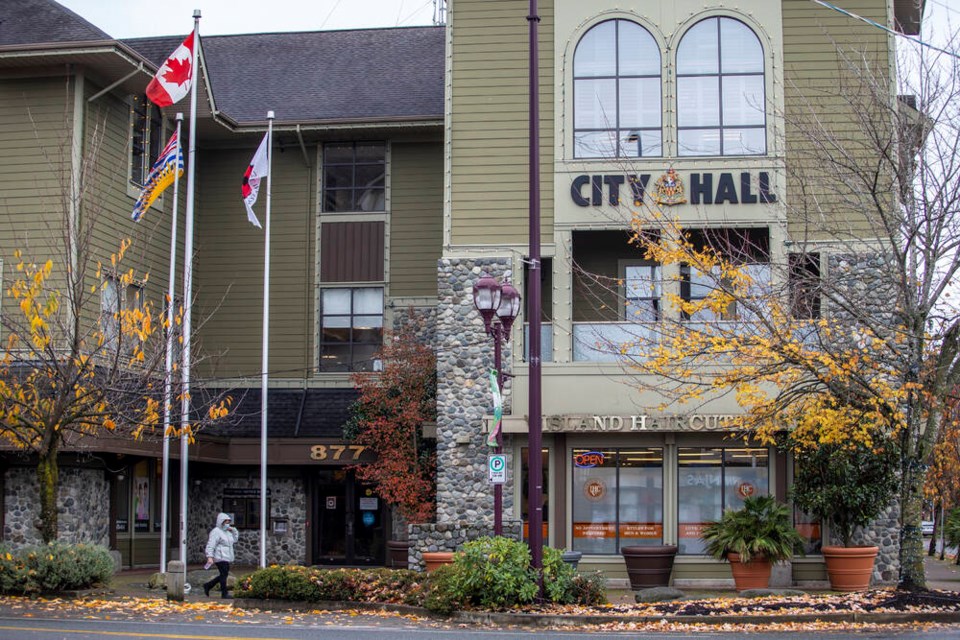Lillian Szpak has announced she is pulling the plug, won’t run for re-election to Langford council in October.
Actually, the decision merely confirms one she made on election night in 2018, she says. “I was happy to be re-elected, but I turned to my husband and said: ‘This will be my last term.’ ” The four-year stint would bring her up to 20 years on council, she reasoned. Enough.
That’s the thing with B.C.’s new(ish) four-year terms for municipal politicians. They can leave people in office for a long time — or be so daunting that they dissuade potential candidates from running in the first place. The long stretch between elections can also leave disgruntled voters cussing and fussing in frustration, waiting for what feels like an eternity for a chance to throw the bums out.
It all leaves people like Szpak, a supporter of the extended terms when they were introduced in 2014, having second thoughts. After eight years of this experiment, she expects the Union of B.C. Municipalities will revisit the issue — not that anything will change before the Oct. 15 elections.
Prior to 2014, municipal and school board elections were held every three years. Moving to four was meant to give councillors enough runway to get things accomplished before diving back into election mode.
Right off the hop there were problems, though. The ballots had barely been counted in 2014 before Saanich council became embroiled in a controversy involving spyware on new mayor Richard Atwell’s municipal computer. That fuss might have made the national news, but it was soon overshadowed by the reality-show dysfunction in Nanaimo, where there were stories of infighting, police investigations, special prosecutors, lawsuits, physical violence and a meeting in which a councillor repeatedly yelled “bite me” at the mayor.
Those were far from the first councils to have a rocky start. In 1985, Conrad Adams, father of rock star Bryan, lasted all of six weeks on Colwood’s very first council before resigning, stating: “I quit through sheer frustration.” But at least in the old days voters didn’t have to wait four years to fix things. Indeed, prior to 1990 civic elections were held annually: councillors served two-year terms, with half the seats up for election each fall.
The bigger challenge with longer terms, though, is how they exclude prospective candidates before the race even begins. Four years might work for full-time politicians, but can be too long for people juggling council duties with families and day jobs.
“It does influence people’s decision to run,” Szpak says. Councils should be places where ordinary people feel qualified to serve, or where they should at least be able to see themselves and their concerns reflected at the table. There should be room for new blood — but newcomers, not quite sure what to expect from the role, can be leery of committing to a four-year mistake.
Metchosin Mayor John Ranns concurs. Four-year terms were pushed through by big-city councillors, he says. The results might suit ideologically driven politicians for whom elected office is a full-time role, but are a deterrent in smaller communities where being a councillor is “one step above volunteerism.”
“Being a councillor these days is more difficult than it used to be,” Ranns says. “To convince someone to give up four years of their life, to be ripped apart by social media, is not an easy thing to do.” Persuading them to stick around for a second term, stretching the commitment to eight years, can be tough, too.
Sure enough, some municipalities struggled to find enough candidates in 2018. In the capital region, all the councillors in Highlands and North Saanich got in by acclamation, while Langford had just seven candidates for six seats. Ranns, who is all but certain he won’t run again, was one of four capital region mayors (the others were in Central Saanich, View Royal and Highlands) who took office unopposed.
The flip side is that when there is controversy, four years of pent-up frustration results in a mob of candidates so large that it offers more anonymity than the witness protection program. In Victoria, 10 ran for the mayor’s job in 2018, and 29 for eight councillors’ spots. In Nanaimo, 40 people ran for the eight council seats. Good luck getting recognized if you’re not part of a slate.
Ranns takes the Goldilocks view: Two-year terms weren’t long enough for councillors to crest the learning curve. Four years keeps good people from running. “Three years was just right.”
Whatever the term, now is the time for people to decide if they’re going to run. Szpak said she announced her intentions six months out to ensure prospective candidates know there’ll be at least one open seat. “I have loved this job,” she says. But the next four years belong to someone else.
• To comment on this article, write a letter to the editor: [email protected]



